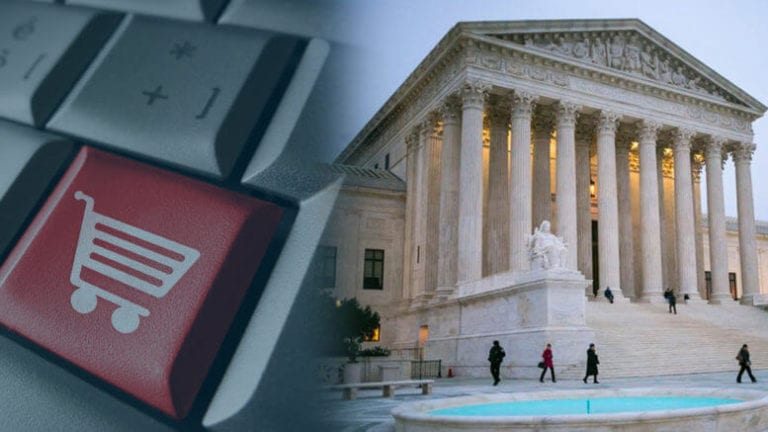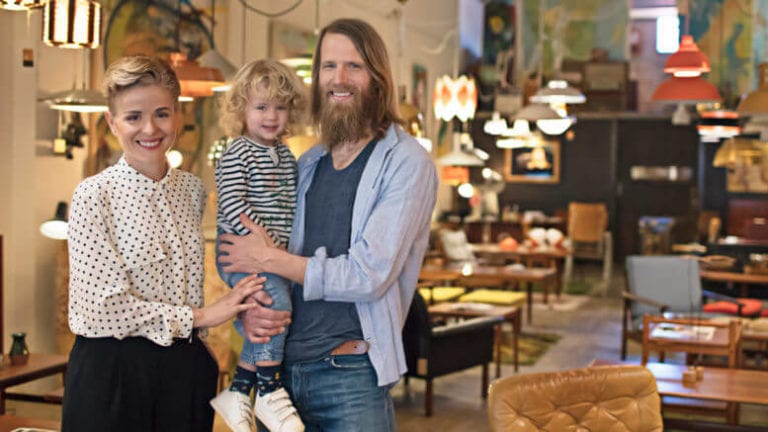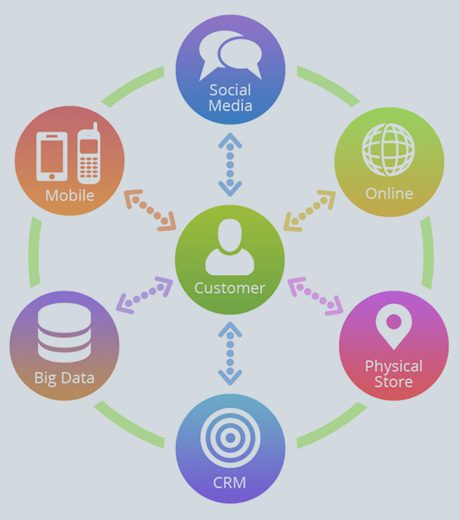I was recently asked this question:
“A furniture retailer is boasting $441 per square foot in annual sales. That seems good, but I don’t have a point of reference. Can you put that in context? What’s the national average for furniture stores?”
That’s easier asked than answered: While $441 seems like a decent sales per square foot compared to industry averages, it may or may not be depending on the business model of the individual operation. Some stores could do a huge profit at $441 while others would lose their shirts. So, more must be known.
Before we dive in, let’s define the sales-per-square-foot metric. Retail sales per square foot is your furniture store’s average revenue for every foot of sales showroom space. The formula is total in-store sales divided by selling area in square feet. So, if a furniture store sold $2.3 million worth of furniture and accessories off its 4,850 square foot showroom floor last year, that store’s sales per square foot would be:
$2,300,000/4,850 sq. ft. = $474 per sq. ft.
When calculating your store’s sales per square foot, don’t forget to exclude the non-selling areas such as your warehouse, employee offices, etc.
Now that you have a basic understanding of the metric and how to measure it, let’s put your store’s number into context and talk about how you can maximize your sales per square foot.
It’s easy to fall into the sales-per-square-foot trap. Like mortgage rates to homeowners, retailers are tempted to compare their number to others. But there’s more to sales per square foot that just the number. To put your store’s figure into context, you need to ask yourself these three questions:
- Is my showroom floor space productive?
- Am I maximizing my sales volume?
- What should I do to maximize it?
To expand on my answer to the sales-per-square-foot question and to provide some insight into improving showroom productivity, let’s look at some metrics.
After reviewing this information, it’s easy to understand my answer in the beginning about the $441 sales per square foot and how it depends on the business model of the retail store. You’ve probably heard that Apple stores are the highest producing sales per square foot stores in brick-and-mortar retail. Think about the Apple store nearest you and you’ll realize it’s likely in one of your city’s highest rent areas.

Apple stores generate high consumer traffic with their prime locations. Because of this traffic, they staff accordingly, employing more salespeople per square foot than I’ve ever seen. Depending on the location, a $1,000 drop in sales per square foot could be devastating to the location’s profitability.
Alternatively, Walmart operates a huge footprint and can usually be found in more destination locations. Walmart stores generate high traffic as well, however their employee count per square foot is much smaller. In a sense, Walmart is almost the opposite business model of an Apple store, yet both stores boast healthy sales per square foot figures.
With respect to furniture retail, I’ve seen many operations run profitable stores around the average of $185 per square foot. Some can be profitable with more sales, and some can be profitable with less. It really depends on the fixed costs on the operation and the amount of inventory invested. If the furniture retailer were operating two stores, both with $185 sales per square foot, with 30,000 total showroom space, their sales would be $5.55 million per year.
If one of these stores had 10 percent occupancy costs of sales while the other had 5 percent, it’s obvious that the latter store would already be $277,000 ahead in terms of profitability. As well, if one store carried 20 percent inventory to sales while the other carried 12 percent, the store with 20 percent would have had $333,000 less in cash flow (6% inventory difference x $5,550,000 = $333,000).
Even at a high of $441 sales per square foot, depending on the occupancy and inventory level, the store asked about in the beginning may be a cash cow or have a cash burn. The rule of thumb I use with respect to retail occupancy is this:
Whatever your sales currently are or are projected to be, your occupancy should never be more than 10 percent of sales if your goal is to maximize profit.
The rule of thumb I use for inventory is this:
Whatever your sales currently are or are projected to be, your inventory should never be more than 25 percent for a high-end merchandise model, 20 percent for mid-range merchandise model or 15 percent for a value priced merchandise model. And, if your goal is to maximize cash, whatever your model is, do not fluctuate more that 2 percent of inventory to sales with respect to your normal inventory level.
So, other than sales per square foot, there are some ways to determine if your showroom is productive, whether you’re maximizing volume, and what should you do if not.
Using a furniture store that does $441 sales per square foot as an example, suppose they had 15,000 square foot, 9 percent occupancy and 22 percent inventory to sales. That’s a $6.615 million operation, that has around $600,000 occupancy costs, and carries around $1.45 million in inventory on average. On the surface that seems pretty good, right?
Sure, however, that does not mean the retailer is maximizing its potential. Here are some other indicators of productivity that can be used to measure and spot opportunity:
Sales per guest
Suppose your furniture store averages about 1,500 visitors per month. That would be a $367 sale per guest. Keeping traffic constant, suppose you were able to grow that by $20 per guest. And, before you say that’s an unrealistic goal, I’ll tell you I’ve never visited an operation that didn’t have the opportunity to do this. That $20 could equal $360,000 in extra annual sales volume.
Sales per salesperson
Suppose that same $6.615 million store had seven full time equivalent employees on average per year. That equals $945,000 in sales per salesperson per year or $78,750 sales per salesperson per month on average. That is above where most stores operate. Great, right? Maybe, maybe not. I reserve my opinion until I calculate the next showroom effectiveness metric.
[There’s no such thing as a natural-born salesperson]
Customers/salesperson/month
With those 1,500 customer visits per month and seven salespeople, each salesperson on average is seeing around 215 people. Gulp. That’s a lot to expect even of the best salesperson. Now I need to know even more about the business model.
That’s because 215 ups per month might be fine if this were a value-priced, quick-sell operation. However, I’m guessing it’s not considering it only has 15,000 square feet and carries 22 percent in inventory.
The square footage and inventory are indicative of a custom-order, higher-priced, higher-average-ticket operation. That’s not the type of store where shoppers walk in, test two or three promotional recliners and buy one 20 minutes later off the floor. They want a little more attention. Assuming that’s the case here, there’s obvious opportunity in getting more salespeople in front of customers.
Special-order furniture retailers have a longer path from the greet to the sale, so they require more people. In fact, many sell $60,000 to $70,000 per salesperson per month with 100 ups per person. If this operation was able to add four more people, and their sales per salesperson overall dropped to $65,000 the result would be $9.36 million in annual sales—a 41 percent increase. This extreme example shows the value of having the right number of the right people working with customers. Do you think an Apple store would do the same volume with 25 percent fewer employees?
Incidentally, adding people, especially, when you’re understaffed, never effects top people. Oftentimes top people improve, and their customers are happier because a more appropriate amount of time is spent determining their needs.
A word of caution: Just adding people seldom leads to full productivity. There’s a saying in the horse world: Training is the easy part; finding the talent is the challenge. I believe this saying is applicable to people. Anyone can find 12 people to sell furniture. You can also put them through the best training programs out there. And you know what? Their results would probably be average at best.
A business may even be better off with fewer top people who are well trained. The issue I see with many furniture retailers is that they don’t typically have great talent and they don’t typically invest in ongoing training.
This isn’t true of the best stores however. Some top-performing retailers invest heavily in hiring, developing and retaining people. I encourage all owners and/or managers to look at their business and track the time and dollars they invest here. A seed will not grow into a tree and produce fruit if you just stick it in the ground and leave it there.
Inventory to sales
Inventory also affects showroom productivity and is an indicator of the level of effectiveness. Having a high inventory-to-sales ratio could indicate issues that need to be attended to. When a store experiences too much merchandise there’s often a perfect reason. Usually it’s one or a combination of the following:
- Excess returns
- Poor quality
- Buying too much new product, too soon
- Selling best-selling models off the floor
- Lack of strategy to sell slow-turning product
- Stock-outs of customer desired product
- Questionable internal and external logistics
All this leads to less than optimal sales volume. The right sales people in the right numbers working the right way with the available consumer traffic enables a productive showroom, provided the product part is optimized as well.
To sum it up, it’s fine to know what your sales per square foot are, but don’t stop there. It’s your responsibility to establish other metrics to track performance. Look at other areas of your business that might have opportunity for improvement. Once you find them, devise a strategy for making them better and get your employees on board with your new strategy. All that’s left is to execute and continue improving.











